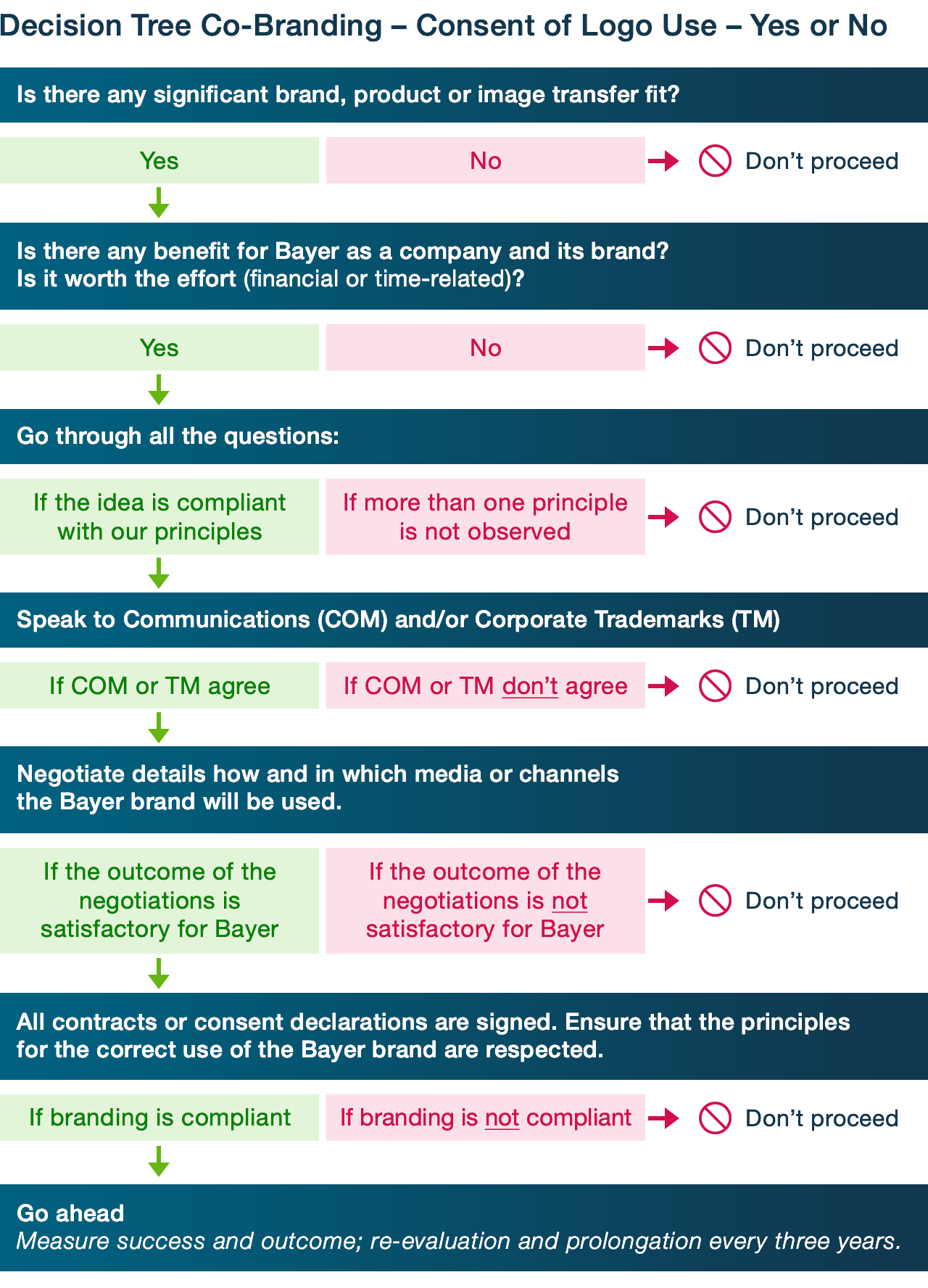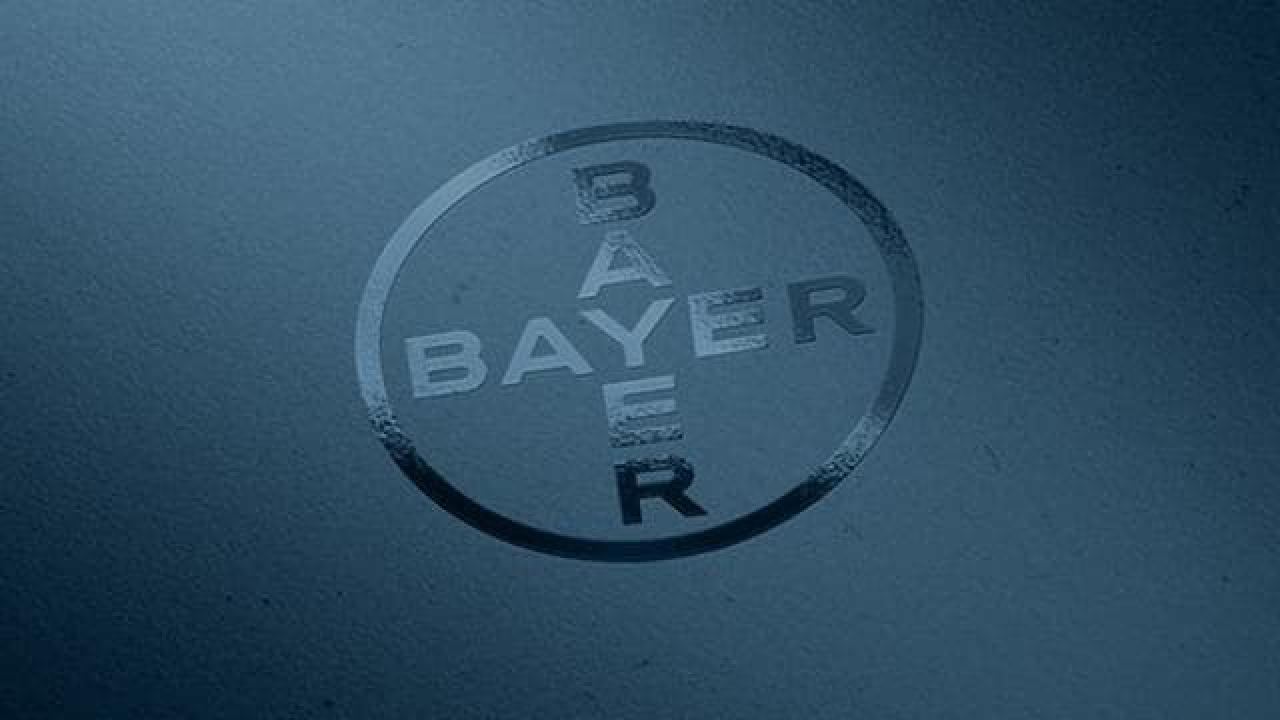Introduction on co-branding
Our brands are important components of our corporate values. It is of highest interest for our company to steadily preserve, protect and enhance the brand values. In co-branding we allow the use of our brands by external partners in defined media and in accordance with our corporate design principles.
Co-branding is a significant expression of confidence in the respective partners, which must be justified by the careful and trustworthy handling of our brands. It is therefore essential that we at Bayer have the final say when it comes to the use of our word and design marks. Our top priority is to ensure the correct use and compliance with our corporate design to ensure best brand recognition and trademark protection. Improper usage may weaken our brand, its value and reputation or ultimately may lead to a loss of our trademark rights.
If you have any further questions about this or any other section of Bayer Identity Net, please contact:
Our corporate brand, represented by the Bayer logo, is often part of co-branding activities. As the Bayer logo has a good signalling effect, extraordinary radiance, and is known worldwide, it is hardly surprising that many companies want to adorn themselves with it. The same is true of many of our product brands. They are on a par with our corporate logo, leaders in many market segments, and impressive because of their innovative character. This is why external partners often want to use them in their communication and advertising material – and why the same co-branding principles apply to the use of our product brands as to our corporate brand.
Co-branding activities must be reviewed in advance from a strategic, legal, marketing and branding perspective. Corporate Brand Management at Communications and Corporate Trademarks at our Legal Department should be consulted. A written consent declaration or a trademark license agreement drawn up by Corporate Trademarks is required. For the entire term of the co-branding agreement regular checks must be conducted on the validity and quality of the co-branding alliance.
It is extremely important to ensure and enforce the correct use of our trademarked corporate and product brands and logos in all co-branding activities. Otherwise, Bayer’s outstanding image may suffer, and our market position could be undermined. Consult the “Use of our trademarks by third parties” section.
Our basic principles
The image and reputation of the partner in question should be of such high quality that compatibility with Bayer’s image and reputation is ensured. After all, co-branding is intended to enhance Bayer’s brand image. The following principles apply and should be considered in advance before starting any co-branding activity:

Brand fit: The brands involved must be a good fit.
Brand complementarity: The brands involved must complement each other in expertise terms so that perceptions of the co-brand are of relevance.
Product fit: The products of the companies involved must be a good fit.
Transfer fit: The brands involved must fit the product category or industry area of the co-brand.
Brand integrity: The brands involved should be of similar integrity.
Brand awareness: The more aware end users are of the brands involved, the more positive their perception and evaluation of the co-brand will be.
Brand relationship within the co-brand alliance: End users should be able to understand the relationship between Bayer and its co-brand partner(s).
Compliance with our Corporate Design principles should be given. For further information please refer to the Bayer Cross chapter.
The legal regulations governing the use of our trademarks and the specific rules for their use by third parties must be observed. A trademark license agreement must be signed by our Corporate Trademarks office.

Contact
If you have any further questions about this or any other section of the Identity Net, please contact: identitynet@bayer.com
For more detailed information on the correct us of the Bayer logo please refer to the Bayer Cross chapter.








